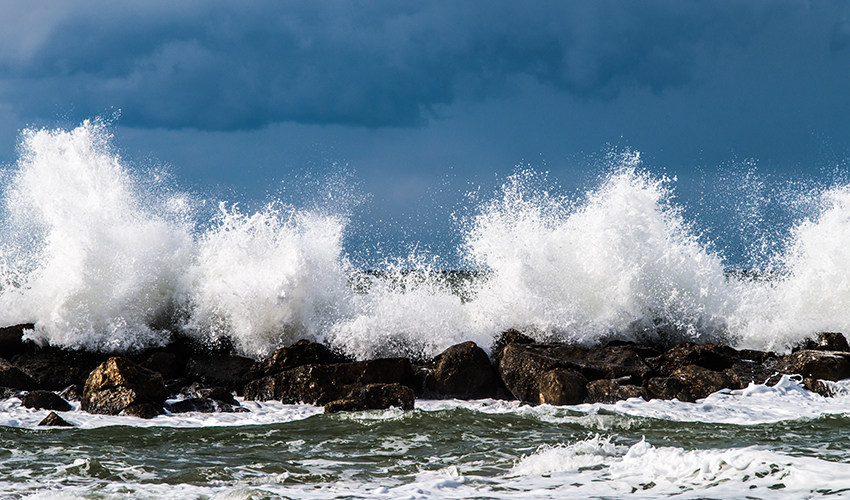SF State experts weigh in on possible responses to surging seas

As ‘King Tides’ make a big splash in the Bay Area, the threat of sea level rise continues to swell
California’s coastline recently experienced some of its highest tides of the year, including in San Francisco where oversized waves splashed across joggers on the Embarcadero. It’s a predictable recurring event known as king tides, caused by the alignment of the sun and moon. But it’s also a chance for San Francisco State University scholars in fields as diverse as economics and biology to see how rising seas associated with climate change will impact the Bay Area — and to reflect on what can be done about it, from seawalls to nature-inspired solutions.
Already, cities are grappling with disappearing coastlines, especially after the state agency that oversees coastal zones asked communities to plan for up to 10 feet of sea level rise by 2100. Professor of Economics Phil King took note, too. King’s academic focus has shifted from the economics of beaches to how sea level rise is affecting California’s coastal communities. “Beaches bring in tens of billions of dollars in tourism revenues, both from out of state and in state. So if beaches disappear, that’s going to have a big impact on our economy,” he said.
That means cities will face tough choices, such as whether to preserve beaches or put up seawalls. King and other economists have dubbed these solutions “green” or “gray.” Green interventions are anything that preserves beaches, such as adding more sand or letting the coastline retreat naturally. Gray refers to manmade interventions like building sea walls, which kills beaches. Gray refers to manmade interventions like building sea walls, which kills beaches. Sea walls disrupt the natural deposit of sand along the shoreline, which shrinks the width of the beach until it eventually disappears.
King helps cities decide what options makes economic sense beyond how much money is made from beaches and the businesses connected to them. There are also ecological values that are hard to measure, he says, like providing habitat for nesting birds and filtering water. “Beaches are a very important part of coastal preservation,” he said.
Though the situation is dire, there’s also a growing group of scientists and conservationists looking for ways to lessen the impacts of rising seas, says San Francisco State Professor of Biology Katharyn Boyer, who operates out of the University’s Estuary & Ocean Science Center. “We have a variety of tools in our toolbox,” she explained. Her preferred tools? Oysters, beds of aquatic grasses and even a scrubby, endangered shoreline plant.
Boyer is a proponent of the so-called “living shorelines” approach, which aims to find natural solutions to stave off the effects of sea level rise. “The idea with living shorelines is that you use habitat restoration to break the waves instead of making the erosion problem worse like some hard engineering solutions can do,” she explained. She also notes that it’s an idea that’s begun to gain traction across the country.
Boyer has a number of small-scale studies running in the Bay Area to figure out what works locally. In some areas, Boyer and her students are reintroducing a plant — California sea-blite — that’s now extinct in the Bay Area. These plants tolerate harsh conditions and strong waves, and thanks to their propensity for climbing, they can provide lasting habitat for small animals that need to climb out of flooding waters. And she’s about to start a new project designing Lego block-like supports for artificial oyster reefs.
Regardless of the specific approach, California’s king tides are a reminder that the state will need to find ways to cope with the effects of sea level rise soon. “There’s a lot we need to learn,” she explained. “But we also need to get moving.”

